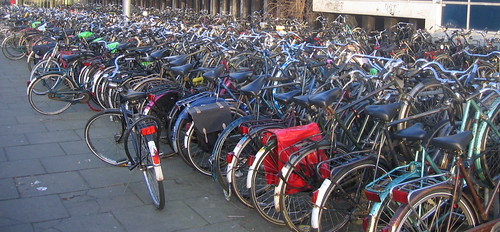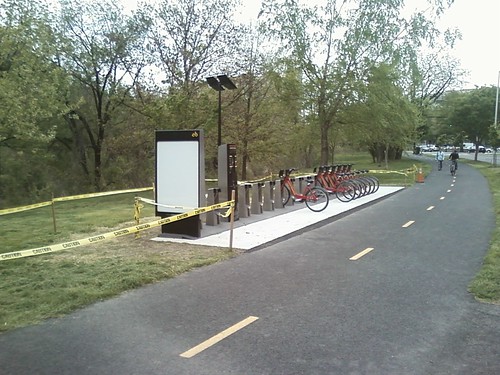 In the City of Bikes: The Story of the Amsterdam Cyclist
In the City of Bikes: The Story of the Amsterdam Cyclist by
Pete Jordan
My rating:
5 of 5 stars
I liked this book very much, both because the subject and the way it was handled was appealing (to me) and also because I think it is well written. I was confused however by title - I only understood what it meant properly after I had read 50 pages or so. In particular, "the story of the Amsterdam cyclist" can be understood as "a social history of cycling in Amsterdam" - "the Amsterdam cyclist" is meant to indicate Amsterdam cyclists in general from the 1890s to today. (Probably this confusion is just my problem.)
The blurb on the back cover states, "Part personal memoir, part history of cycling, part fascinating street-level tour of Amsterdam,
In the City of Bikes is the story of a man who loves bikes-in a city that loves bikes." But really 90 percent of this book (which is almost 400 pages of text plus 40 pages of notes) is a history of urban cycling as transportation in Amsterdam, and to some extent in the Netherlands more generally. There is some comparison to cycling (and use of cars) in the United States, but not so much as to seem polemical. The "tour of Amsterdam" referred to in the blurb is, I think, incidental to the history of cycling for the most part (and that's fine).
The personal memoir aspect is ten percent or less of the book and mostly at the beginning and end of the book and the beginning and end of chapters. The transitions from the memoir portions to the more purely historical narrative are smooth and the style is consistent and at least for me; I was just as interested in both parts. Everyone has read a nominally "travel" book where it feels like the author is padding his or her experiences with "historical context" and the shifts from the personal travel anecdotes to the "history" portions are clunky - there is none of that here.
In fact, even though this could have been reworked as academic work on cycling history, it is far more pleasant (and just as instructive) to read the way it is, with the unobtrusive memoir sections providing helpful context by providing an understanding of "where the author is coming from."
When I got this book in my hands, I was a little doubtful - looking at a 400+ page book entirely on cycling in Amsterdam I wondered if it could really be something I would be drawn into and enjoy. Well, that turned out to be no problem - I liked it a lot.
My only slightly negative comments are minor. The chapters about cycling in Amsterdam in World War II are interesting but of the entire book it was the one part that seemed a little long. It was somewhat surprising that the "modern era" (the 1980s on) is dealt with in about twenty pages at the end (although there are mentions of modern Dutch cycling throughout, when I think about it). Having read this, I somewhat oddly feel I can tell you more about policies for Dutch cycling in WWII than today. Hmm.
It was also odd that the author's one previous book credit is writing a "memoir" of his experiences washing dishes (professionally!) in all fifty states. I regard such "listicle" type books as an artifact of our time (although I'm probably wrong about that) and not a good one. That doesn't mean I don't read such books from time to time, but many of them seem like clever ideas and don't read well - anyway, it wasn't exactly a hint in my mind of what is in
this book.
For an American reader interested in cycling for transportation as an alternative, this book is a gentle (and I guess extensive) historical introduction or overview. While it is obvious that the author has a point of view and what that point of view is, the book is not written to hit the reader over the head with that.
The Publishers Weekly blurb states, "the readers will understand that the bike is to Amsterdam what the car is to America" - yes, and will understand in a helpful way
why.
View all my reviews on Goodreads of cycling books



